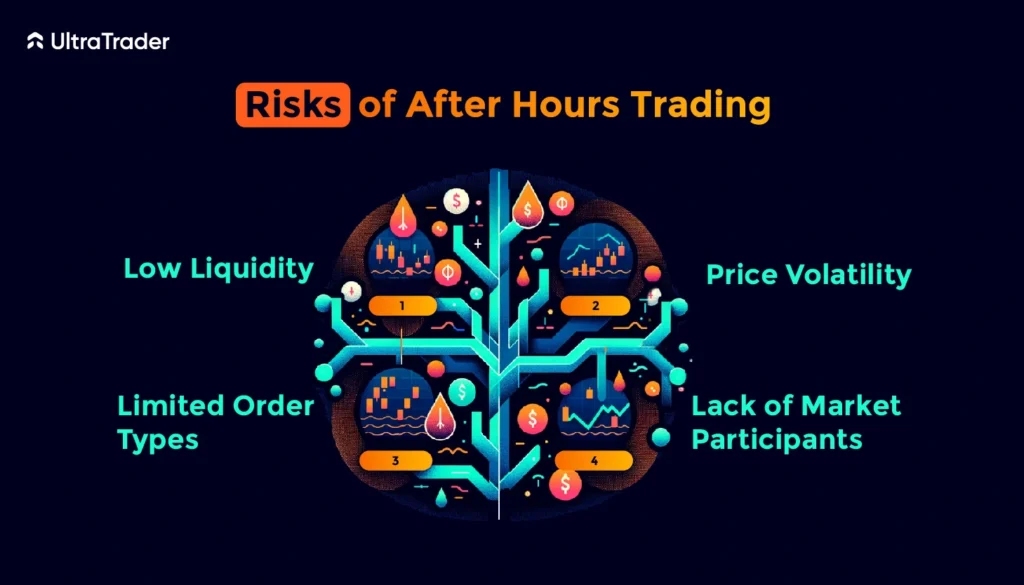In the dynamic world of stock markets, trading is typically thought to occur during regular market hours, usually from 9:30 AM to 4:00 PM Eastern Time in the United States. However, trading doesn’t necessarily end when the bell rings. This is where after-hours trading comes into play, a less familiar but equally crucial facet of the financial markets. In this blog post, we will delve into what after-hours trading is, how it works, its benefits, and potential risks, providing you with a comprehensive understanding of this intriguing trading period.
Understanding After Hours Trading

What is After Hours Trading?
After-hours trading refers to the buying and selling of securities outside the traditional trading hours. This period includes two distinct sessions: the post-market session, which typically runs from 4:00 PM to 8:00 PM ET, and the pre-market session, which takes place from 4:00 AM to 9:30 AM ET. Together, these sessions extend the window during which traders can execute trades, providing more opportunities to react to news and events that occur outside of standard market hours.
How Does After Hours Trading Work?
After-hours trading occurs on electronic communication networks (ECNs), such as Instinet, and NYSE Arca which match buy and sell orders without using a traditional stock exchange. ECNs enable investors to trade directly with one another, rather than through a broker, facilitating extended trading hours. Here’s a breakdown of how after-hours trading operates:
- ECNs and Liquidity: Liquidity in after-hours trading is often lower compared to regular trading hours. This is because fewer participants are active during these periods, leading to wider bid-ask spreads. As a result, it can be more challenging to execute large orders without significantly impacting the stock price.
- Order Types: Not all order types available during regular trading hours are permitted in after-hours trading. Market orders, for example, are less common due to the lower liquidity, which can result in unfavorable price execution. Limit orders, where the trader specifies the maximum price they are willing to pay or the minimum price they are willing to accept, are more frequently used.
- News and Events: Significant news and earnings reports are often released outside of regular trading hours. After-hours trading allows investors to react immediately to such information, rather than waiting for the market to open. This can lead to more volatile price movements as traders rush to buy or sell based on the latest news.
Benefits of After Hours Trading

After-hours trading offers several advantages that attract certain types of investors and traders:
Extended Opportunities
The primary benefit of after-hours trading is the extended time window it provides for executing trades. This can be especially advantageous for investors who have day jobs or other commitments during regular market hours. It also allows for immediate reaction to news events, potentially capitalizing on overnight developments that could affect stock prices.
Strategic Flexibility
Investors can use after-hours trading to implement strategic moves based on post-market or pre-market news. For instance, if a company releases a positive earnings report after the market closes, traders can buy shares during the after-hours session to get ahead of potential price increases the following day.
Better Pricing
Occasionally, after-hours trading can offer better pricing opportunities. If a stock experiences a sharp movement during regular hours, the after-hours session may provide a chance to buy or sell at more favorable prices before the market reopens and adjusts to new information.
Risks of After Hours Trading

While after-hours trading can be beneficial, it also comes with several risks that traders must be aware of:
Low Liquidity
One of the most significant risks in after-hours trading is low liquidity. With fewer participants, it can be harder to execute trades at desired prices, and bid-ask spreads can be much wider. This can lead to increased volatility and the potential for large price swings.
Price Volatility
The combination of low liquidity and immediate reactions to news can result in significant price volatility. Stocks can experience large price movements in a short amount of time, which can be both an opportunity and a risk. Traders must be prepared for the possibility of substantial price fluctuations.
Limited Order Types
As mentioned earlier, the types of orders available during after-hours trading are limited. This can restrict a trader’s ability to execute specific strategies and might lead to less favorable trade executions. Market orders, in particular, can be risky due to the potential for significant price slippage.
Lack of Market Participants
During after-hours sessions, there are fewer market participants, which means less overall activity and volume. This can make it more difficult to find counterparties for trades and can also increase the risk of price manipulation by large traders or institutions.
Practical Tips for After Hours Trading

For those interested in after-hours trading, here are some practical tips to navigate this unique trading period:
Use Limit Orders
Given the low liquidity and potential for high volatility, it’s generally advisable to use limit orders rather than market orders. This allows you to set the maximum or minimum price you are willing to trade at, helping to avoid unfavorable price execution.
Stay Informed
Since after-hours trading often reacts to news and events, staying informed about market developments is crucial. Keep an eye on earnings reports, economic data releases, and significant corporate announcements that can impact stock prices.
Monitor Volume and Liquidity
Pay attention to the volume and liquidity of the stocks you are trading in the after-hours session. Stocks with higher average daily volumes during regular trading hours are more likely to have better liquidity after hours as well.
Have a Plan
Approach after-hours trading with a clear strategy and plan. Understand the risks involved and be prepared for potential price volatility. Set specific entry and exit points and adhere to your plan to avoid emotional trading decisions.
Different Trading Times: Stocks, Crypto, and Forex

The trading times for different markets can vary greatly. Stocks are traded during regular market hours with after-hours sessions extending the window. In contrast, the cryptocurrency market operates 24/7, allowing trading at any time of day or night. This continuous trading cycle provides greater flexibility but also requires constant monitoring. The forex market, like crypto, operates 24 hours a day during the week, starting on Sunday evening and closing on Friday evening. Understanding these differences is crucial for traders who want to participate in multiple markets. Each market has its own unique trading dynamics and requires different strategies and levels of vigilance.
Conclusion
After-hours trading extends the window of opportunity for investors to react to market news and events, providing additional flexibility and strategic advantages. However, it also comes with risks such as low liquidity, price volatility, and limited order types. By understanding these factors and implementing careful strategies, traders can navigate the after-hours market effectively. Whether you are an experienced trader or just starting, staying informed and using disciplined trading practices will help you make the most of after-hours trading opportunities.
For more on refining your trading strategies, check out our trading journal to track your trades and performance. Additionally, explore the role of AI in your investment portfolio and consider our crypto trading journal app for a comprehensive trading experience.










